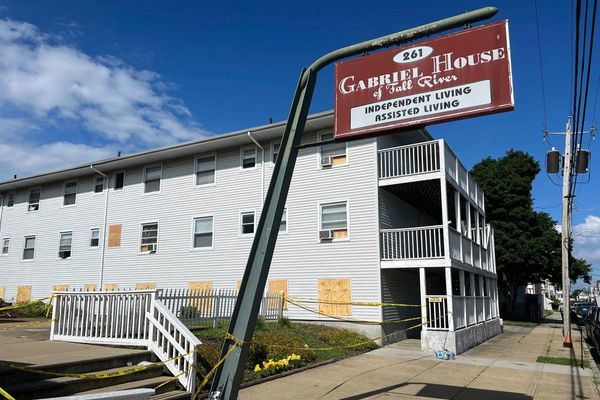DETROIT — Buried alongside the thousands of graves in a Birmingham cemetery is a part of American history that may not have been widely known.
A recent designation by the National Park Service, though, could change that now that the city's connection to Black history and the nation's Underground Railroad network, which carried thousands of runaway slaves to freedom, is recognized.
Among the graves at Birmingham's Greenwood Cemetery are the final resting places of local abolitionist Elijah S. Fish and George B. Taylor, a Black man who escaped slavery and fought for the freedom of other slaves.
The cemetery is the historical connection because it contains the graves of the two men and presents a physical connection to their history, part of the requirement for historical designation for the National Park Service.
The separate stories of Fish and Taylor were discovered two years ago by Birmingham Museum volunteers Dr. George Getschman, a Birmingham dentist, who found an old obituary of Taylor and Jacquie Patt. Birmingham Museum researcher Donna Casaceli also took part in telling the stories of the men, said Birmingham Museum director Leslie Pietack.
"It was a team effort but it was those people who made the difference," Pietack said about the discoveries.
Greenwood Cemetery, located on Oak Drive near Woodward, has about 3,000 graves and is now nationally designated as a historic site associated with the Underground Railroad. The cemetery was chosen because the homes of Fish and Taylor are no longer standing, said Pietack.
The National Park Service named the cemetery, along with 15 other sites, to the National Underground Railroad Network to Freedom. There are 700 such sites throughout the country and in Puerto Rico.
"It reinforces that we had a whole network of people who all participated to make this work so people could seek freedom," said Pietack. "Most people wouldn't associate Birmingham with Black history but anti-slavery efforts were always present here. Oakland County was very prominent with the abolitionist movement. That's really amazing."
Birmingham, founded in 1818, was much like many parts of Michigan in actively combating slavery. In 1830, Michigan had a burgeoning anti-slavery movement.
Fish was one of Birmingham's first settlers and bought land in the town in 1820. He was described as an influential "principled and hard-working" man and was a deacon in the Presbyterian church.
He was an organizer of anti-slavery efforts through his association with other local abolitionists such as lawyer and state legislator George Wisner of Pontiac, and Quaker activist Nathan Power of Farmington.
Fish was a co-founder of the Oakland County Free Discussion and Anti-Slavery Society, which had about 50 members in 1836. The group was organized before the territory of Michigan had organized its own society, according to information at the Birmingham Museum and its online website as well as other published historical accounts.
He actively worked to organize abolitionist groups throughout the early 1840s and support abolitionist political interests, with Birmingham as his base of operations. Fish and his fellow abolitionists formed alliances with noted formerly enslaved abolitionist Henry Bibb who moved to Canada and advocated abolitionists buying tracts of land to help former slaves settle in Canada, according to the Birmingham Museum and other historical sites.
Abolitionists stepped up their efforts in the wake of the passage of the Fugitive Slave Act of 1850, which made it legal for men to capture formerly enslaved people and take them back to the South.
Thousands came through Michigan to escape. Hundreds crossed over into Canada to find freedom and new lives.
Fish died in February1861 after a long illness, according to the Birmingham Museum.
The two men were not acquaintances but were bound by their determination to stamp out slavery.
Taylor escaped to Michigan at the age of 32 in 1855 after a public beating while he was enslaved by a Kentucky family, said researchers including those at the Birmingham Museum.
He, like thousands of formerly enslaved people, made it to Michigan, with safe houses and other spaces along the iconic Underground Railroad, a network of houses, Quake churches and other institutions that gave refuge to those who escaped slavery .
Many used the Underground Railroad network and the guidance of the North Star, which brought them north to freedom. Taylor was taken across the Ohio River in 1855 during the first leg of his escape from the family that enslaved him. He spent a harrowing two weeks traveling solely during nightfall, say historians.
At one point during the journey, Taylor awakened to bounty hunters' dogs encircling him. He got away and successfully dodged gunshots of slave catchers and traveled for nearly three weeks before he made it to the Michigan border, then to Niles and then onto Detroit and Canada via the Underground Railroad, according to an online historical information for the Birmingham Museum.
At one point, Taylor was tracked down again by bloodhounds and arrested. As luck would have it, the justice hearing his case was an abolitionist. Taylor was released.
Taylor settled in Birmingham and worked as a farmhand. He became the first African American property owner and tax payer, in his own words, in the city.
Taylor died in 1901 and his wife, Eliza, died months later. The couple are buried not far from abolitionist Bibb in an unmarked grave.
The Birmingham Museum raised $16,000 from around the country and plans to place a grave marker on the Taylor's grave later this year with the inscription, "Born into slavery, died free in Birmingham."
"The Elijah Fish and George Taylor burial sites located at Greenwood Cemetery represent yet another example of Michigan's importance as it relates to the Underground Railroad in particular, and American history in general," said local journalist and historian Ken Coleman.
"Both men were heroes worthy of recognition."







